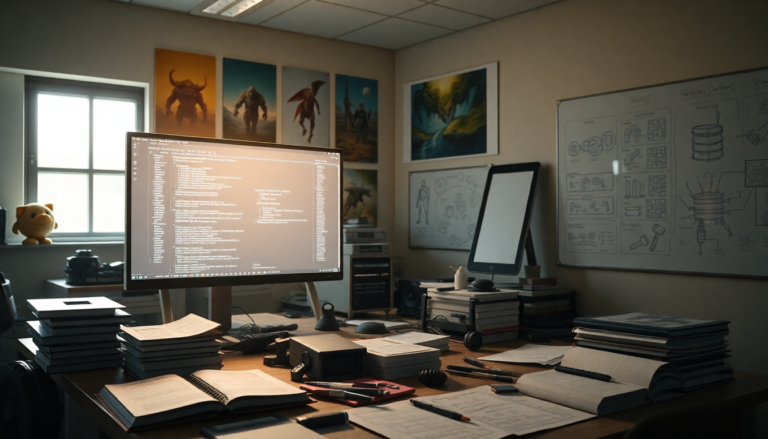Argomenti trattati
In the ever-evolving world of gaming, innovation is the name of the game. Developers are constantly on the lookout for new ways to captivate players, and one of the standout advancements in recent years is procedural content generation (PCG). Imagine being able to create everything from sprawling game levels to unique characters, all in real-time—this is the power of PCG, especially when paired with artificial intelligence (AI). The possibilities for delivering truly immersive gaming experiences are expanding like never before.
What is Procedural Content Generation?
Procedural content generation is all about using algorithms to generate game data dynamically, rather than relying solely on manual design. This approach allows developers to efficiently create vast worlds filled with intricate details. Whether it’s a lush landscape or a maze-like dungeon, PCG ensures that no two gaming sessions are ever the same. Doesn’t that sound exciting? Each time you jump into your favorite game, there’s a fresh experience waiting for you.
The concept of procedural generation isn’t entirely new; it traces its roots back to early computing. However, it really took off in the gaming industry with the rise of rogue-like games, which are famous for their randomly generated levels and high replayability. Nowadays, PCG has found its way into various genres—from open-world adventures to space exploration—adding layers of depth and variety to the gaming experience.
How AI is Amplifying PCG
When you mix AI with procedural content generation, the results can be nothing short of revolutionary. AI algorithms have the capability to analyze player behavior and preferences, allowing for the creation of game content that adapts in real-time. Picture this: as you dive into your game, the environment, quests, and even the storyline evolve based on your actions. How cool is that?
For example, an AI could observe your interactions within a dungeon to pinpoint which challenges you enjoy the most, and then generate new levels tailored specifically to your tastes. This kind of personalization not only heightens player engagement but also makes each gaming session feel distinct and compelling.
Moreover, AI-powered PCG can significantly streamline the game development process. Instead of painstakingly crafting every single element, developers can leverage algorithms to populate game worlds. This shift allows them to focus on other critical design aspects, ultimately saving time and leading to unpredictable gameplay experiences that keep players on their toes.
Looking Ahead: Future Possibilities and Challenges
The future of gaming is looking bright with the ongoing integration of AI and procedural content generation. Experts are forecasting that advancements in machine learning will pave the way for even more sophisticated content creation. Imagine a game where entire ecosystems are generated dynamically—not just landscapes and quests, but also flora, fauna, and even weather systems that react to your choices. Wouldn’t that take immersion to a whole new level?
Furthermore, AI could play a pivotal role in community-driven content creation. By analyzing player-generated content, AI can refine and expand game worlds, incorporating the best ideas from the gaming community. This collaborative approach could lead to richer experiences as players help shape the game’s evolution.
However, it’s not all smooth sailing. Ensuring that AI-generated content maintains quality and balance is crucial. Traditional testing methods might fall short; AI can simulate numerous playthroughs to identify potential issues, ensuring a fair and enjoyable experience for everyone.
As we look ahead, the fusion of AI and procedural content generation stands to revolutionize the gaming industry, offering players dynamic, personalized experiences that keep them coming back for more. And the implications could stretch far beyond entertainment, reaching into fields like education, training, and even therapeutic environments. Exciting times are on the horizon!

